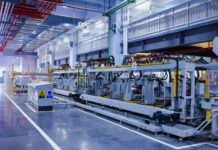
In the rapidly evolving global economy, the significance of higher education is undeniable. Its profound impact on industry innovation and growth is increasingly recognized by policy makers, business leaders, and academics alike and GetHelpWithHomework can help with it. High education’s broad and multifaceted role spans from contributing to the development of a skilled workforce to fostering research and innovation that fuels economic growth and competitiveness. This article delves into the intricate relationship between higher education and industry, examining how they mutually reinforce each other in a symbiotic relationship that drives societal progress.
University-Industry Collaborations: Advancing Research and Development
One of the key avenues through which high education impacts industry innovation and growth is through university-industry collaborations. These partnerships bring together the unique strengths of academia and industry, leading to the advancement of cutting-edge research and development (R&D) that can be translated into practical applications.
Universities are often hubs of pioneering research, offering an enriching environment that nurtures creativity and intellectual exploration. Their collaboration with industry partners provides them with valuable insights into real-world challenges and market trends, enabling them to align their research focus with industry needs. This not only enhances the relevance of their research but also accelerates the translation of theoretical concepts into practical innovations that can be commercialized.
Conversely, industry partners benefit from the scientific expertise and research capabilities of universities. They gain access to innovative ideas, technologies, and research findings that can catalyze their R&D efforts. Moreover, these collaborations often lead to the development of patented inventions, which can provide a competitive edge in the marketplace. Thus, university-industry collaborations serve as a powerful catalyst for innovation and growth, contributing to the overall dynamism and competitiveness of the economy.
Knowledge Transfer and Technology Commercialization: Transforming Academic Discoveries into Practical Applications
Another crucial aspect of high education’s impact on industry innovation and growth lies in knowledge transfer and technology commercialization. Universities are not only centers of learning but also generators of new knowledge and technologies. Their role in transforming academic discoveries into practical applications through technology commercialization is crucial for driving industry innovation.
Knowledge transfer involves the dissemination of academic research and findings to the industry. This can be achieved through various channels, such as publications, conferences, workshops, and collaborative projects. By providing industry with access to the latest research findings, universities can help businesses stay abreast of technological advancements and emerging trends, thereby enabling them to innovate and adapt.
Technology commercialization refers to the process of transforming academic discoveries and inventions into marketable products or services. Universities often have dedicated technology transfer offices that work closely with researchers and industry partners to identify commercialization opportunities, protect intellectual property rights, and facilitate the licensing or sale of technologies. Through technology commercialization, universities can contribute to the creation of new industries, stimulate job creation, and promote economic growth.
Industry-Academia Partnerships: Bridging the Gap between Education and Industry Needs
Industry-academia partnerships play a pivotal role in bridging the gap between education and industry needs. These collaborations enhance the quality and relevance of higher education, ensuring that graduates are equipped with the skills and knowledge necessary to thrive in the industry.
Industry input into curriculum development ensures that the skills taught in universities are aligned with the needs of employers. This reduces the skills gap that often exists between what students learn and what the industry requires, thereby enhancing the employability of graduates. Moreover, industry-academia partnerships often provide students with opportunities for internships and work placements, providing them with valuable hands-on experience and exposure to the workplace.
Industry-academia partnerships also foster a culture of lifelong learning, encouraging students and professionals to continually update their skills and knowledge in response to changing industry trends and demands. This culture of lifelong learning is integral to maintaining a dynamic and adaptable workforce that can drive industry innovation and growth.
Entrepreneurship and Start-up Incubators: Fostering Innovation and Economic Growth
High education institutions also play a vital role in fostering entrepreneurship and supporting the growth of start-ups. Many universities have entrepreneurship programs and start-up incubators that provide students and alumni with the resources and support needed to launch their own businesses.
Entrepreneurship education equips students with the skills and mindset necessary to identify opportunities, develop innovative solutions, and establish successful businesses. These entrepreneurial skills not only enhance the employability of graduates but also contribute to the creation of new businesses and jobs, thereby driving economic growth.
Start-up incubators, on the other hand, provide budding entrepreneurs with a supportive environment to develop and refine their business ideas. They offer a range of services, including mentoring, networking opportunities, access to funding, and business development support. By fostering a vibrant start-up ecosystem, universities can stimulate innovation, create jobs, and promote economic growth.
In conclusion, high education plays a critical role in driving industry innovation and growth. Through university-industry collaborations, knowledge transfer, and technology commercialization, universities contribute to the advancement of research and development, the creation of new technologies, and the generation of new knowledge. Through industry-academia partnerships and entrepreneurship programs, they help bridge the gap between education and industry needs, foster a culture of entrepreneurship, and support the growth of start-ups. As such, investing in high education is not merely an investment in individual capabilities, but also a strategic investment in the future of the economy and society.





